Political Socialization Quiz - Module 4
1/9
There's no tags or description
Looks like no tags are added yet.
Name | Mastery | Learn | Test | Matching | Spaced |
|---|
No study sessions yet.
10 Terms
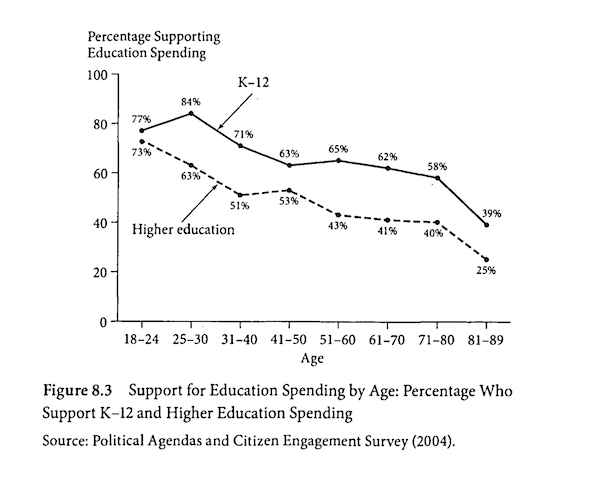
The data in the chart support analysis of which agent of socialization? (5 points)
Family |
Life cycle stage |
Peers |
Social environment |
Life cycle stage
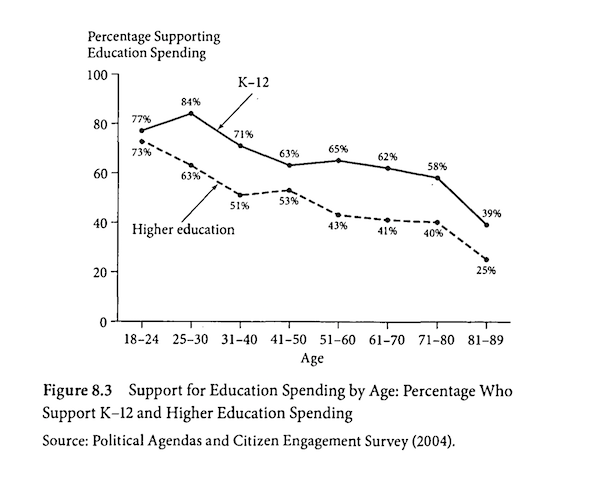
Which of the following statements is reflected in this data? (5 points)
There was a steep increase in citizen support for K–12 education spending between ages 25 and 50. |
There was a steep increase in citizen support for higher education spending between ages 71 and 89. |
Younger citizens are more likely to support K–12 education spending than older citizens. |
Older citizens are more likely to support higher education spending than younger citizens. |
Younger citizens are more likely to support K-12 eduction spending than older citizens
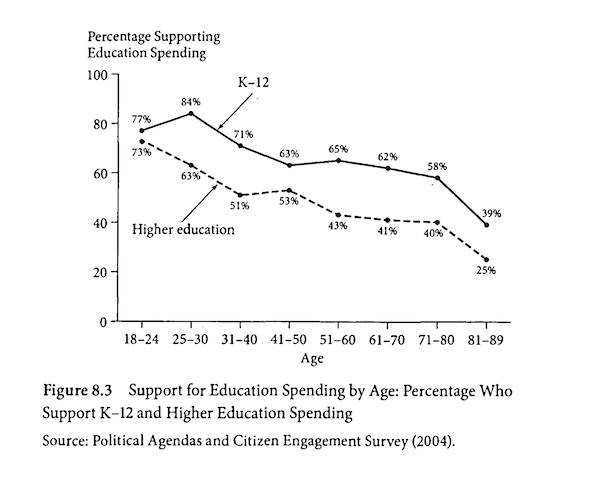
Which of the following is a potential consequence of the trend illustrated in the line chart? (5 points)
Individuals in early stages of the life cycle will call for decreasing higher education spending. |
Individuals in late stages of the life cycle will call for increasing K–12 education spending. |
Middle-aged constituents with college-aged children will call for decreasing higher education spending. |
Young voters who are starting families will call for increasing K–12 education spending. |
Younger voters who are starting families will call for increasing K-12 education spending.
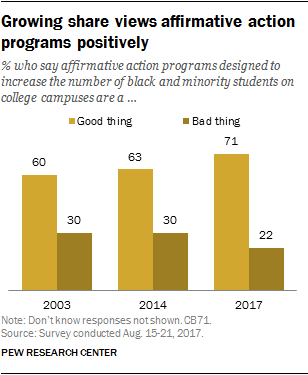
Which of the following is an accurate statement about the information in the bar graph? (5 points)
Americans consider affirmative action programs contrary to rule of law. |
Americans consider affirmative action programs contrary to education. |
American ideas about equality of opportunity are changing over time. |
American ideas about limited government are changing over time. |
American ideas about equality of opportunity are changing over time.
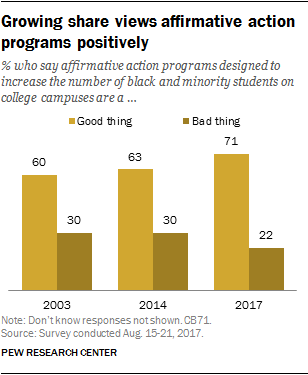
The policy ideas in the bar graph have the potential to create tension between equality of opportunity and (5 points)
democracy |
individualism |
limited government |
rule of law |
individualism
"As students of socialization make clear, we are especially permeable to the effects of early experiences. The kinds of historical events that leave social change in their wake tend to have an especially profound and lasting impact on the young."—Jennifer L. Erkulwater, Political Participation over the Life Cycle
Which statement best summarizes the argument in the excerpt? (5 points)
Historical events greatly affect individuals when they are at an impressionable age. |
Individuals tend to shape their ideas about politics from what they learned at school. |
The influence of peers' ideas and opinions increases as an individual grows older. |
The political ideas of older individuals are significantly affected by historical events. |
Historical events greatly affect individuals when they are at an impressionable age.
Collection of an individual's digital metadata is most likely to cause tension between the competing values of rule of law and (5 points)
democracy |
equality of opportunity |
free enterprise |
limited government |
limited government
The process in which a person learns and develops attitudes and values about government is called (5 points)
agents of socialization |
equality of opportunity |
generational influences |
political socialization |
political socialization
Given the abundance of information available to today's citizens, what "shortcut" do many citizens use to make political decisions? (5 points)
Cues and information from party elites |
Detailed research into social issues |
Several diverse sources of information |
Personal values, opinions, and education |
Cues and information from party elites
A student was suspended from school for delivering an offensive speech with vulgarities to the student body, though the speech addressed valid issues at the school. The Supreme Court held that the student's free-speech rights were not violated by the suspension.
This scenario is an example of the tension that can occur between individualism and (5 points)
democracy |
equality of opportunity |
free enterprise |
rule of law |
rule of law